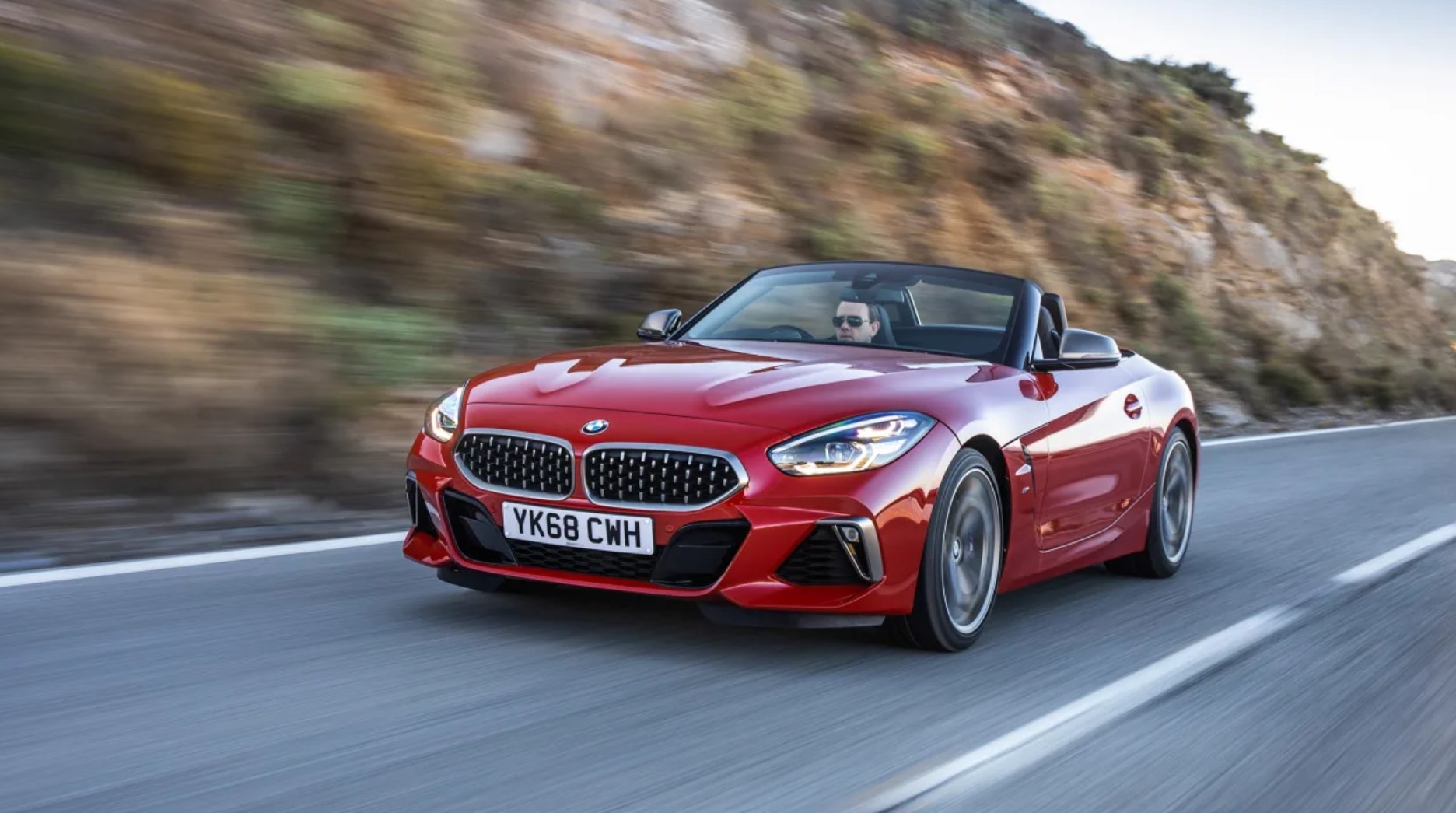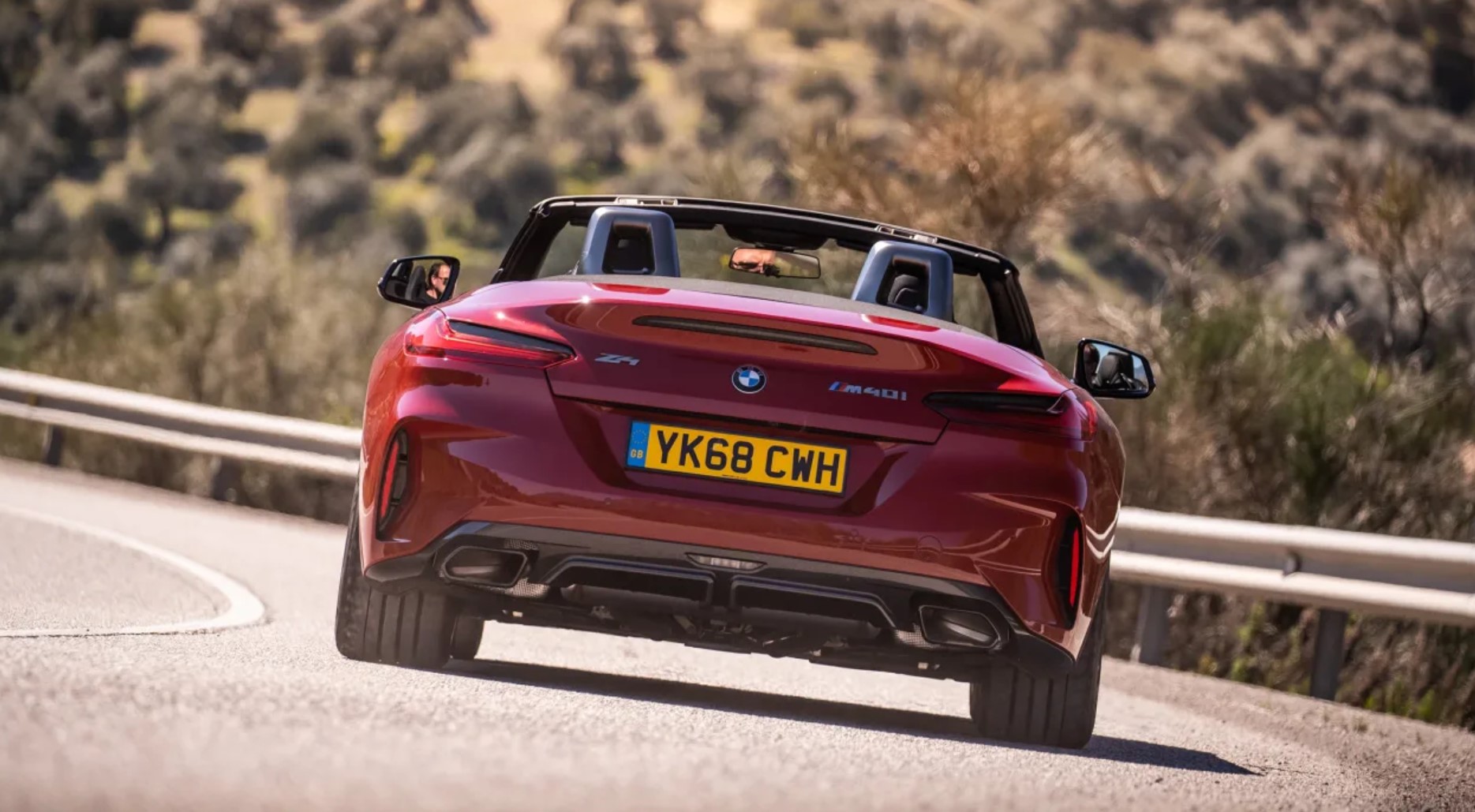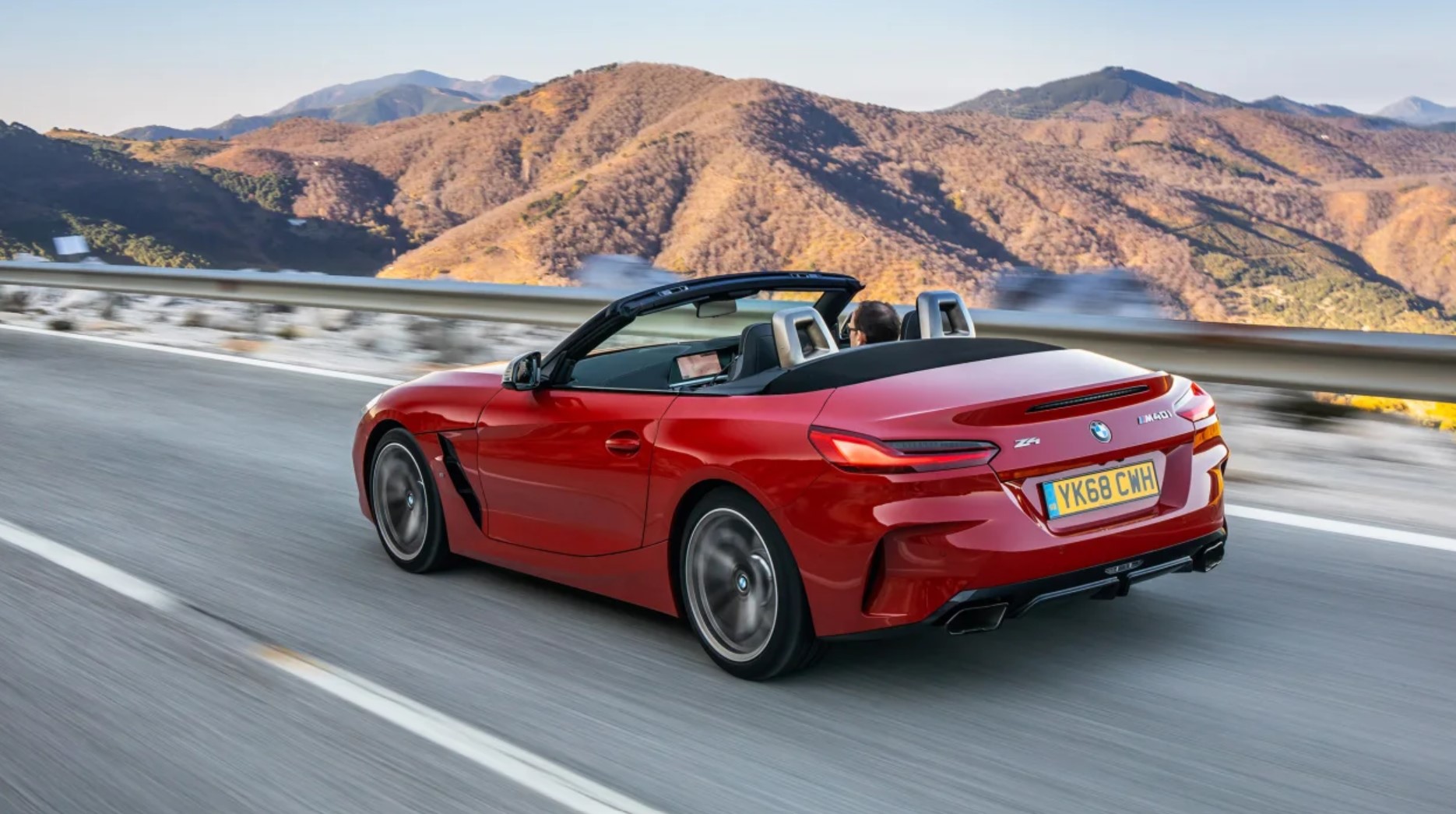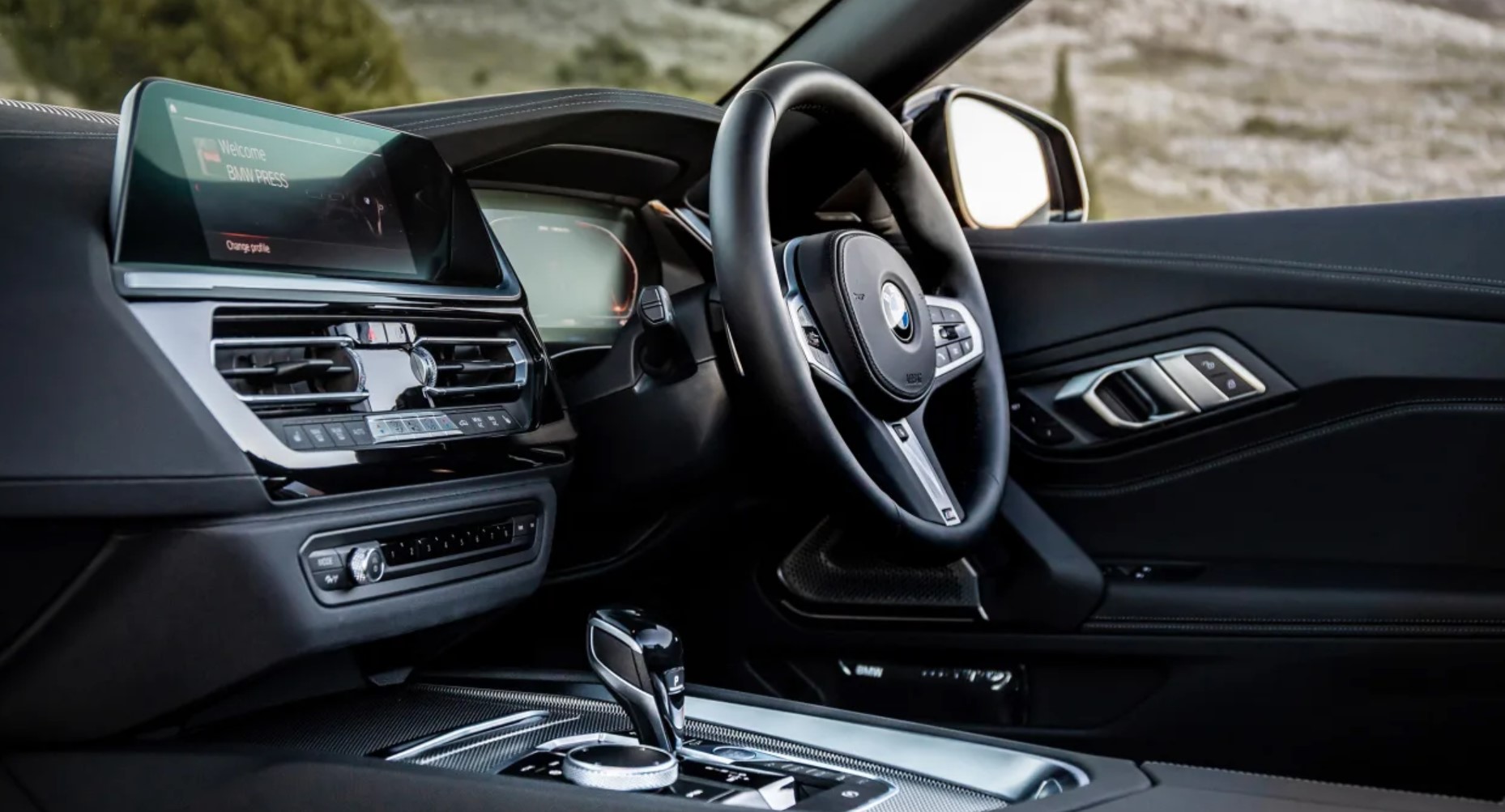The BMW Z4 is a talented roadster with much in its favour, just don’t expect Porsche Boxster levels of tactility.
The Z4 has always been a BMW that’s had a little bit of a personality crisis, never being fully clear as to its purpose in life. The first generation wasn’t a bad car at all, but it couldn’t manage to knock the Porsche Boxster from its perch as the driver’s roadster of choice.
BMW’s second stab at it was an altogether softer machine. Again, not a bad car, but not an overtly sporting one either, even in range-topping sDrive35iS guise. No, this was a machine that was aimed at the Audi TT and Mercedes SLC rather than the Boxster, and as a drop-top cruiser, it was a fine piece of kit provided you didn’t ask too many questions of its chassis.
But what should we expect from the current G29 generation of Z4?
The Z4 is an attractive design, although perhaps not quite as good looking as the concept that did the rounds prior to the production car’s reveal. There is some overly fussy detailing around the front end and the mesh-type kidney grilles on the high-end models don’t quite gel properly.
It’s perhaps the Z4’s proportions that make it look a little gawky, especially in photos – it does look better in the flesh than it seems to in pictures. It’s 85mm longer than the previous-generation Z4, yet its wheelbase has actually been shortened by 26mm, which has had the effect of increasing the front and rear overhangs. Combine this with front and rear tracks that have been increased by 98mm and 57mm (front and rear respectively) and you end up with a car that looks a little bit stumpy. And thanks to those widened tracks the Z4 is now just 4mm narrower than a 5-series – surely not a good thing in a machine purporting to have sporting intentions.
The engines used in the Z4 come from BMW’s latest modular range of units, the 20i using a 2.0-litre single-turbo four-cylinder, while the M Performance M40i receives a 3.0-litre straight-six, again with a single (twin-scroll) turbocharger.
The 20i delivers 145kW between 4500 and 6500rpm and that’s backed up by a useful 320Nm of torque from 1450rpm to 4200rpm. The lone six-cylinder in the range in the M40i ups the stakes considerably with 285kW available at 6500rpm and 500Nm of torque between 1600 and 4500rpm. That torque figure is the same as an E39 M5’s V8 could muster, and is available over a much wider rev range, so it should be clear the M40i isn’t short of performance.
While the 2.0-litre four-cylinder in the 20i might not be the most tuneful of four-pots ever made, it still sounds relatively inspiring, certainly more so than in the 3-series where they’re rather muted. They’ll pop and bang on the overrun and on full-bore upshifts when in Sport mode, and while the sound is augmented through the speakers it does have a more natural tone to it than in other BMWs. They’re keen to rev and deliver when it comes to precisely measured throttle inputs.
The 3.0-litre in the M40i has a further layer of sophistication than the four-cylinder units and has all the trademark six-cylinder smoothness you’d expect. In Comfort mode though it can end up being almost inaudible as the gearbox is keen to change up at every opportunity, keeping the revs down and the soundtrack muted. To get the best from it, Sport mode needs to be selected, and then it becomes more inspiring with a sharper, significantly more sporting feel about it. With a wide torque band it feels fast almost no matter which gear you’re in.
There’s no doubt the Z4 would feel like a more engaging machine had BMW not decided to equip all models with the eight-speed ZF auto since axing the manual. No, doesn’t sound very sporting, does it? For a supposed sports car it would be good to have the increased level of interaction that a manual ’box brings to the driving experience. Yes, the auto will shift faster and be more efficient, but a three-pedal set-up would be far more engaging.
However, there’s nothing wrong with the eight-speed auto – it shifts imperceptibly when cruising and is fast enough – if not quite as fast as the best dual-clutch systems – when driving harder, it just feels like it’s much more in keeping with an executive cruiser rather than a sporting roadster.
The Z4’s certainly quick, with even the entry-level 20i model accelerating from 0 to 100km/h in 6.6sec, which is perfectly acceptable, especially when you take into account its 1405kg kerb weight. Two-door roadster it maybe, but the Z4’s no lightweight.
Naturally enough, it’s the range-topping M-lite M40i that’s the most rapid, thanks to its 285kW turbocharged straight-six. With a 4.1sec 0-100km/h time, it’s quicker than a PDK 718 Boxster S.
Where the 20i is brisk, rather than outright fast, the 30i does feel considerably quicker, especially in the mid-range, but there’s no doubt the M40i is the one that is distinctly rapid. On dry roads it hooks up astonishingly well, and feels every bit as quick as its figures suggest.
On first acquaintance the Z4 can seem like a far too refined proposition; it’s by no means a demanding car to drive and unless you delve into its various drive configurations you could be left with the impression that it’s a junior exec masquerading as a sporting roadster. Push it harder and it certainly improves, with further layers of ability, but it’s nowhere near as sharp a driving tool as a Boxster.
In part, this sophisticated nature is down to the Z4’s incredibly stiff structure – there’s nary a shimmer or a hint of flex, even when travelling over rough surfaces. The 20i has less rubber on the road than the M40i and a suspension set-up that’s slightly softer too. As a result, it’s the Sport model that seems to be the most playful, with steering that’s slightly more communicative, and while grip levels are slightly lower, it’s a more interactive machine than the arguably overtyred M40i.
The M40i adds a significant amount of kit to its armoury – 19-inch wheels with wider tyres, adaptive M dampers and a limited-slip differential. The grip it can generate is quite phenomenal, and while the variable sport steering (standard on all Z4s) is accurate and direct, it gives very little impression of what the front tyres are up to. The rear is similarly planted, but other than the scenery passing at a quicker rate of knots, there’s not a huge sensation of speed or involvement.
BMW says the M40i is faster than the old M2 Competition round the Nürburgring and we can believe that, as it’s very composed when being driven quickly. There’s just a lack of joie de vivre in the way it goes about its business. Quick, undoubtedly, just not enthralling or involving.
The interior of the Z4 is a great place to spend wheel time, with the slight caveat that it doesn’t actually feel desperately more sporting than any other BMW. Thanks to being based on a shortened version of the CLAR chassis that underpins the 5-Series, that’s pretty much the interior you get with the Z4, and that means that it’s a technological tour de force rather than feeling like a classic roadster.
You do, at least, sit low in the car and the standard M Sport seats are comfortable and hold you in all the right places. There’s plenty of standard equipment too – BMW’s Live Cockpit Professional brings digital instruments and the ability to talk to the car in the same way you would with Siri or Alexa.
The hood fits well and doesn’t generate any unnecessary wind noise and it can be raised or lowered in just ten seconds at speeds of up to 50km/h. The fabric hood, as opposed to the previous generation’s folding hard-top, also means the boot is 50 per cent bigger, and at 281 litres it’s large enough provided you pack with soft bags.
BMW’s billed it as having been engineered with a focus on maximum agility, dynamism and steering precision yet in almost the same breath admits that if you’re looking for the ultimate driving experience then the Boxster is the way to go.
And the Z4 does have a lot going for it; good (if a little gawky from some angles) looks, a relatively entertaining drive, good engines offering a blend of performance and economy, and a host of standard equipment. It’s an undemanding car to drive, offering precise steering, huge levels of grip and a balanced chassis, but it’s somewhat one-dimensional, lacking any layers in its performance and delivery. It’s easy to drive fast and for the most part very composed when doing it, but you’d be having more fun in that MX-5 or Boxster.
For many owners the lure of a reasonably priced BMW roadster will be enough – stylish, quick and easy to drive and with all the gadgets and gizmos you could possibly need. If you’re happy to swan about the countryside roof down taking in the sights and smells it’s a good choice, just don’t expect it to be the last word in dynamic ability or tactility.
Bob Harper










